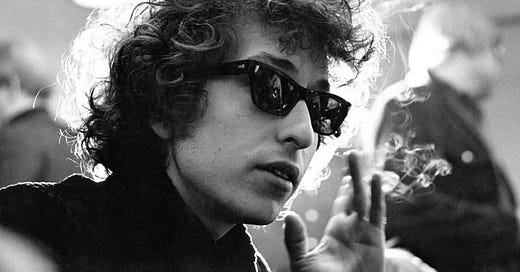Dylan Revisited: Blonde on Blonde (1966) - part 2
Concluding the revisit to the final part Dylan's epic double album masterpiece.
This is a series by DylanRevisited based on former Twitter threads, now available here in an easier to read and longer lasting format.
Just before Bob Dylan and his band of Nashville players were about to record Rainy Day Woman #12 & 35, Charlie McCoy suggested a new drum part for the song’s introduction. Drummer Kenny Buttrey quickly worked it out and soon Blonde on Blonde’s memorable opening was in place.
Earlier, Dylan had played the song on piano for producer Bob Johnston, who remarked that it sounded like a Salvation Army band. Next thing, McCoy was making late-night calls to his contacts, trying to rustle up a horn section.
Rainy Day Woman is the epitome of a group of musicians in full creative flow, firing out ideas and executing them with exuberance. They cut the track so quickly that Robbie Robertson missed the recording, having gone out for a pack of cigarettes.
The whole atmosphere of the recording is so raucous, with much laughter, screeching and whooping t…




